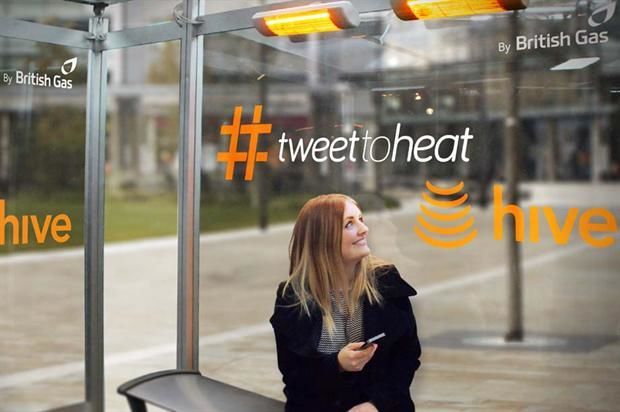
Television advertising is still one of the most effective ways to reach millions in today's media environment. However, the ad medium has its pros and cons. Cost is the most obvious. While television is generally free, the advertiser isn't. Television advertising is effective at convincing viewers to purchase a product. But, a word of warning: if viewers view an ad too many times, they may start to lose interest.
The television commercial is one the most prominent types of TV advertisement. It's a short 15-second advertisement that airs during commercial breaks. It's usually a highly visual ad, which is designed to grab the viewer's attention. These advertisements draw people in with visuals, sound, motion.
Another popular form of ad is the infomercial, which is a series of short ads that run for about 30 minutes. These ads are typically featured on late-night and weekend TV channels. They often include a call to action such as a phone number or a web address. Compared to a traditional TV ad, an infomercial is one of the more expensive forms of TV advertising.

A new form of television ad is a streaming ad, which is a marketing material embedded within the broadcasting content. This type of ad is available on a variety of platforms, including cable and satellite networks. This method, unlike traditional TV advertising allows advertisers to target specific audiences based on their age, gender and interests.
Another type of TV advertisement is the banner ad. It can be found at the bottom of a program or video. A scroll ad can also be found on news channels. It's a continuous scrolling advertising.
Finally, there is the OTT media, which refers to over-the-top entertainment services. These are free but require an internet connection. These platforms are effective in reaching large audiences, but they can also be confusing.
Advertisers are more interested in digital media channels as a way to promote their brands. As technology advances, so does the TV ad format.

TV advertising applies the old saying, "If It Ain't Broken, Don't Fix it," Advertisers can't guarantee to get their message across. They should be willing and able to experiment with different approaches. An example: While the ad on morning kids might not be the most engaging, it could be on the evening news.
While there are many types TV advertising, most of the best ones will use the same basic attributes: sound, motion and visuals. The most important thing to keep in mind is that these techniques are best used to evoke a response in the viewer. In order to maximize your ad's impact, every ad should be carefully designed. It is important to do thorough research to determine the best strategy for your campaign.
FAQ
What do you need to know about print advertising?
Print advertising is a good medium to communicate effectively with consumers. Many companies use print advertising to promote their products. The main goal is to catch the attention and buy from the consumer.
Print ads are usually one-page long. They contain text, images, logos, and any other graphics. Print ads can also contain sound, animation, videos, and hyperlinks.
The following are the main types print advertisements:
1. Brochures - Large format printed brochures are used to draw people in to stores. They often have colorful pictures and eye-catching designs.
2. Catalogues are smaller versions than brochures. These are usually sent to customers who request information about specific items.
3. Flyers - These small pieces of paper are distributed at events like fairs and concerts. If they are given out at retail outlets, they can be obtained for free, but you must pay for them.
4. Posters – These are larger versions than flyers. These flyers can be displayed on buildings, fences and walls. They are usually created using computer software programs designed to catch passersby's attention.
5. Direct mail - These are letters or postcards that are sent directly to potential customers. These are sent to customers periodically by businesses to remind them about their business.
6. Newspaper Ads – These are ads that appear in newspapers or magazines. These are typically quite long and often contain text as well images.
What is the cost of advertising on social media?
This route is not for everyone. Based on the time spent on each platform, you will be charged monthly.
Facebook - $0.10 Per 1,000 Impressions
Twitter - $0.20 for 1,000 impressions (if tweeting)
Linkedin - $0.30 for 1,000 impressions if your send out invitations
Instagram - $0.50 for 1,000 impressions
Snapchat - $0.60 per 1,000 impressions ($0.40 per user)
YouTube – $0.25 per 1000 views
Tumblr – $0.15 per 1000 impressions for text postings
Pinterest - $0.05 per 1,000 impressions per month
Google+ - $0.15 to $0.0.20 per 1,000,000 impressions
Tumblr $0.15- $0.20 for 100,000 impressions
Vimeo - $0.20 - $0.25 for 10,000 impressions
Soundcloud - $0.20-$0.25 per 1 million plays
StumbleUpon - $0.20 -$0.25 per 1 billion pageviews
Digg - $0.20- $0.25 for 1000 diggs
Reddit – $0.20-$0.25 Per 1000 Comments
Wordpress - $0.20 - $0.25 for 500 comments
Flickr - $0.20 -- $0.25 per 5,000 photo uploads
Is it possible for traffic to be free?
Free traffic refers to traffic which comes directly from organic search results. This is also known as organic or natural traffic. There are many methods to obtain free traffic such as article marketing or social media marketing.
Article Marketing is an excellent way to generate free traffic. The CPC is usually very cheap compared to paid ads. Content marketing is also known by the term article marketing.
Social Media Marketing - Social media sites like Facebook, Twitter, and LinkedIn allow you to promote your business through advertising. These social media platforms can be used to post updates and share photos. You may also build relationships with potential customers. Many businesses choose to buy ad space in social media because they want a wider reach at a reduced price.
Blogging - Blogging is another great way to generate free traffic. Quality content that is enjoyable to read will attract people. Once your blog is attracting visitors, it's possible to make money from it by selling products and/or services.
Email Marketing - Although email marketing has been around since before the advent of the Internet it is still one of the most effective ways to drive traffic and sales to your site. Sending emails regularly is a good strategy to grow your list of subscribers and eventually sell them something.
What is advertising's basic purpose?
Advertising isn’t about selling products.
Advertising is all about communicating ideas and values with people who are already interested. Advertising is about changing minds and attitudes. It's about building connections.
It's all about helping people feel good.
You can't sell to your customers if you don’t know their needs.
So before you start any advertising project, you should first understand your customer's needs and wants, and buying habits.
You can then design ads that resonate with them.
What is the best way to advertise online?
Internet advertising is an integral part of any business strategy. It allows businesses to reach potential clients at a low price. There are many types of internet advertising. Some are free, while others require payment.
There are also several ways to advertise on the internet, including banner ads, pop-up ads, search engine optimization (SEO), pay-per-click (PPC) advertisements, social media marketing, e-mail marketing, and mobile marketing. Each method has its pros and cons.
What should you know about TV advertising?
Television advertising is a very effective medium to reach many people at once. It was also very costly. But if you use it correctly, it can be extremely powerful.
There are many different types of TV ads, but they all have certain common characteristics. You must ensure your TV ad fits within the category it is being placed. You shouldn't attempt to make a lifestyle commercial the same as a product ad. Your message should remain consistent throughout the campaign.
Second, prime-time hours are the best times to air your ads. This is because most viewers watch TV while relaxing in front of the set. They should be able to concentrate on what you are saying.
The bottom line is that even if you have a lot to spend, it doesn't necessarily mean you'll be able to get great results. Actually, it could be the contrary. A study conducted by the University of California found that commercials aired during popular shows were less likely to sell products than those aired during unpopular shows. If you spend a lot of money advertising on TV, make sure it's done right.
What is branding exactly?
Branding is how you communicate who you are and what you stand for. It is how people remember your name.
Branding is about creating a unique identity that distinguishes your company. Branding is more than a logo. It encompasses everything, from the physical appearance of your company to the voice and tone used by your employees.
Customers feel more confident buying from your company if they have a solid brand. They know what they're getting. They also feel more confident choosing your products than those from competitors.
Apple is a prime example of a company with a strong brand. Apple's brand is recognized worldwide for its clean design, high product quality, and great customer support.
Apple's name has become synonymous for technology. Apple is what people associate with when they see a phone or computer.
If you're considering starting a new business, you should consider developing a brand before launching. This will give your brand a personality.
Statistics
- This means that at least 50% of an ad needs to be shown on the screen for at least one second. (quicksprout.com)
- Worldwide spending on advertising in 2015 amounted to an estimated US$529.43 billion. (en.wikipedia.org)
- Nonetheless, advertising spending as a share of GDP was slightly lower – about 2.4 percent. (en.wikipedia.org)
- In 1919 it was 2.5 percent of gross domestic product (GDP) in the US, and it averaged 2.2 percent of GDP between then and at least 2007, though it may have declined dramatically since the Great Recession. (en.wikipedia.org)
External Links
How To
How can you advertise on a billboard
Billboards were popularized by the United States Army during World War II. They became a standard fixture along roadsides and highways. Most billboards contain text advertising. However, some have photographs or art. While most billboards are static, others display messages that change regularly, such as weather forecasts, sports scores, stock prices, and political events.
The majority of billboards are outside displays. However, there are indoor versions. Outdoor billboards usually face traffic passing by them at least several times per day, while indoor ones may only be seen once every few years. A "cubic" outdoor billboard is the most popular type. It is made up of three layers: two sheets of glass sandwiched between a layer of fiberglass mesh and one sheet of glass. This allows air flow through the billboard and keeps it cool in summer and warm in winter.
Companies like Billboard Advertising Inc. are paid by advertisers to place their ads on billboards. These companies then make space available on billboards for advertisers. These spaces are sold to advertisers depending on the amount they plan to spend on advertising. They often choose the best locations for their ads based on where people drive and walk the most.
Billboard Advertising Inc. also sells ad space. They have contracts with local governments for signs to be erected on city property. Some cities allow billboards to be placed anywhere, while others limit them to specific areas. Chicago for instance requires billboards not to exceed 1,000 feet from any highway. Other cities stipulate that billboards must be at least 500 feet away from any school or church.
Billboard Advertising Inc. holds contracts to promote products or services in the United States. This includes Florida, California and Nevada, Texas and Arizona, New Mexico and Colorado.